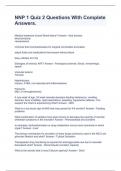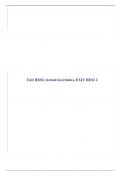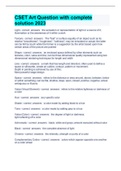Summary
Exam summary block 2 - Research and Powerpoints
- Course
- Institution
- Book
Exam summary Block 2 business, the Course year International Business. Book: Doing research by Nel Verhoeven, ISBN 4757. Hogeschool Rotterdam. Exam summary block 2 - Research of chapters 7.2 / 13.2/ 14.2 / 14.3 / 14.4 / 14.5 as those were the only required chapters for the exam. Included in...
[Show more]













